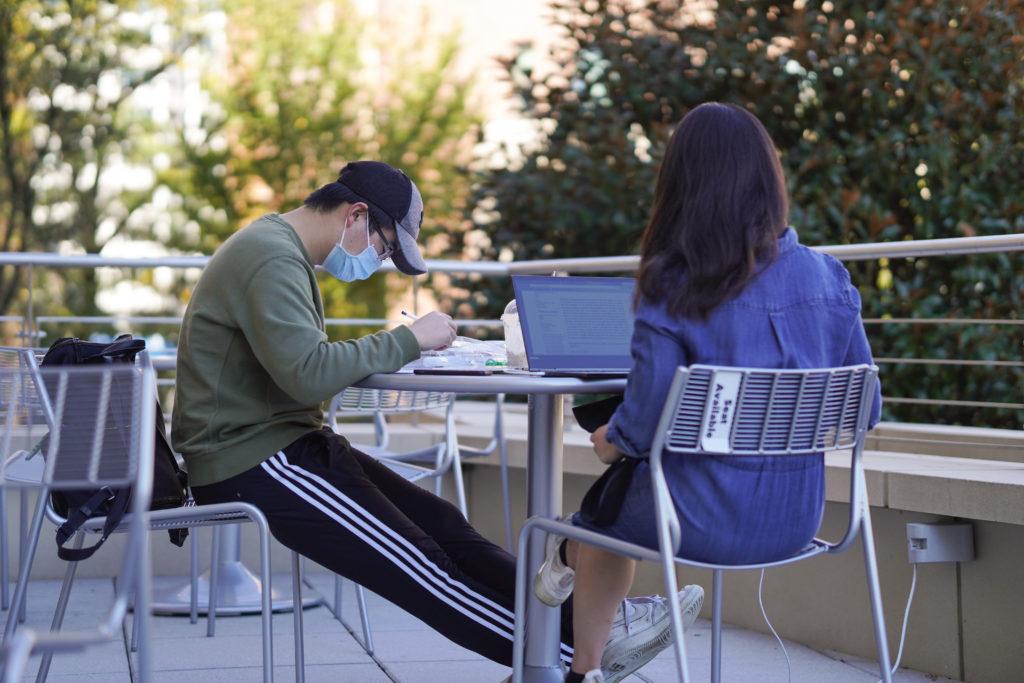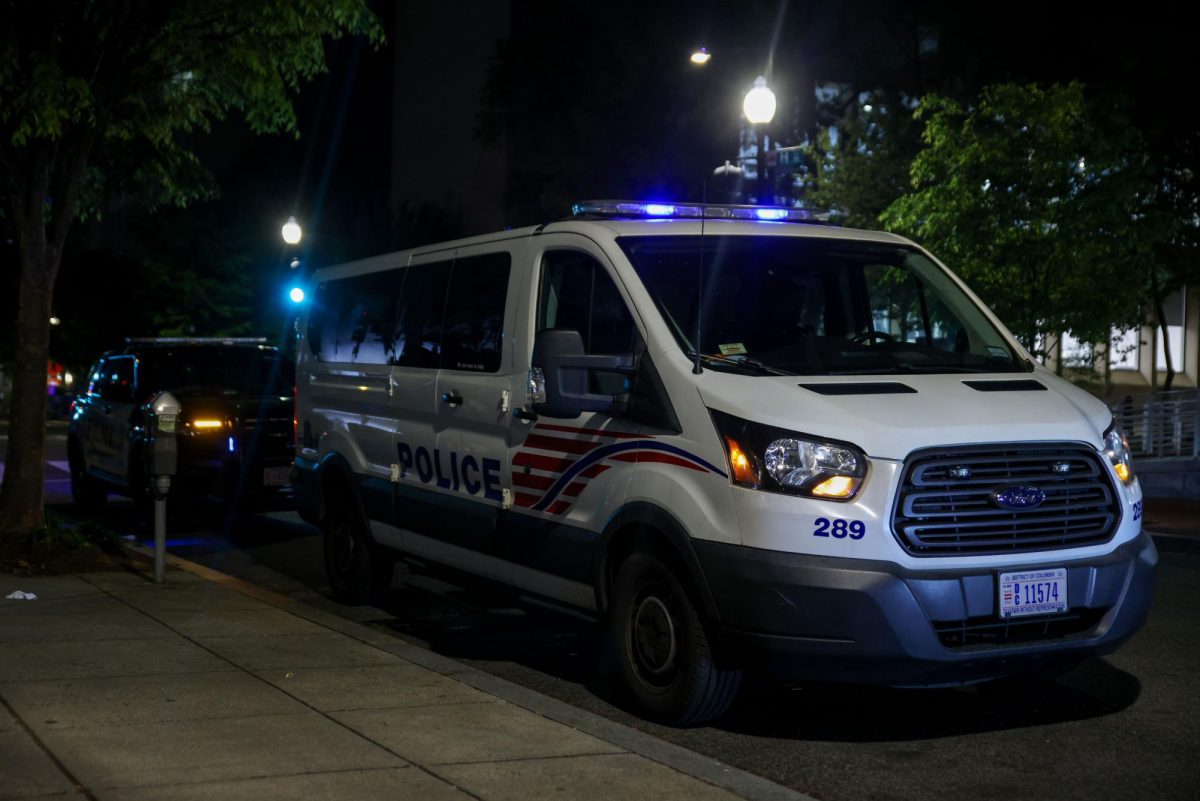More than a year after the University transitioned to remote learning as the COVID-19 pandemic triggered deaths and infections across the District, officials said GW effectively maintained a safe year on campus.
The University recorded fewer than 750 positive coronavirus cases in the GW community since they began testing on-campus students weekly in August, logging about a 0.5 percent overall positivity rate. Experts in public health and biology said mandating mask-wearing around campus, contact tracing and isolation were successful measures in preventing the spread of the virus on campus through student gatherings.
The University faced an uptick in coronavirus cases in October and another spike in March due to Greek life activity and small gatherings. Local residents said they worried off-campus residences would accelerate the spread of the virus in the surrounding community.
The University tested a total of nearly 87,500 individuals with the highest positivity rate on campus reaching 2.19 percent, GW’s coronavirus dashboard shows. Lynn Goldman, the dean of the Milken Institute School of Public Health who advises administrators on GW’s response to the pandemic, said deciding against a full reopening in the fall was the biggest challenge the University faced.
“While we had done much planning, it wasn’t clear until mid-August that our test lab would be fully operative,” Goldman said in an email. “More critically we saw a rise in cases nationally in summer 2020 that we felt was indicative that it would be difficult if not impossible to operate safely with a fully reopened campus in fall.”
Scott Burnotes, the vice president of the Division of Safety and Facilities, said administrators limited access to campus “as much as possible” by encouraging online instruction for students. He said officials worked to ensure that transmission rates remained low by regularly testing students, faculty and staff and abiding by Centers for Disease Control and Prevention guidelines.
“We required everyone on campus to wear a mask when in public areas or in the presence of others, we practiced social distancing and encouraged everyone to follow CDC recommendations for handwashing and coughing/sneezing hygiene,” Burnotes said in an email. “We also have strict isolation and quarantine protocols for anyone that tested positive or was exposed to a positive case.”
After closing campus last March, administrators decided to keep classes remote for the fall, granting housing to just 500 students. Officials kept classes virtual but expanded capacity to host 1,500 students this spring.
Officials announced that they plan to open campus to “the fullest extent possible” next semester, and the University will require all returning faculty, staff and students to get vaccinated prior to their arrival on campus.
Public health and biology experts said universities were able to limit outbreaks through comprehensive testing and quarantining infected students.
Ellen Stein, the director of the University of Illinois at Chicago’s Contact Tracing and COVID-19 Epidemiology Program, said GW’s decision to test students weekly was “excellent,” especially since the testing regime was implemented in combination with a contact tracing program.
“Weekly is an excellent testing regimen if paired with a contact tracing program that can then follow up on those positive cases, rapidly interview them about who they may have had close contact with and then notify those individuals who are exposed to begin quarantine,” Stein said.
She said positivity rates on university campuses can fluctuate throughout the semester, but over the last two weeks, UIC’s highest percent positivity rate was 0.55 percent compared to GW’s seven-day rolling average of 0.06 percent.
Stein said it’s hard to tell what would have happened if GW had opened campus for in-person learning this semester, but GW’s percentage positivity rate with remote learning was relatively low.
“The fact that you’ve had a low percent positivity shows that GW selected a safe course,” Stein said.
Other universities faced higher percentage positivity rates, with the University of Notre Dame facing a 20.6 percent rate and the University of Alabama recording 29 percent positivity at the beginning of their semesters in person in late August. GW’s positivity rate in late August reached 0.86 percent, and its peer institutions Georgetown and Northeastern universities recorded 0.32 and 0.28 percent positivity rates, respectively.
Stein said universities are finding it difficult to make concrete plans for the fall semester since it’s still unclear how the pandemic will develop in the summer. She said universities need to be prepared “to pivot” and adjust their plans according to the information they receive about the virus in the next few months.
Stein said the question of whether GW’s choice to mandate the vaccine was the right one is “tricky.” She said schools require vaccination for many other diseases like measles, but institutions should be careful that imposing a vaccine requirement doesn’t turn people away from vaccination.
“Sometimes by making things mandatory, it can turn some people off who may otherwise have been convinced to go and get their vaccines,” Stein said. “I think right now, we want to focus on encouraging as many people as possible and educating them to get their vaccines.”
Zandrea Ambrose, an associate professor of microbiology and molecular genetics at the University of Pittsburgh, said universities now implement “rigorous” coronavirus policies, because they have much more information available to them, like CDC guidelines, than they did at the start of the pandemic.
“I think our knowledge is very different now, so I think we tend to go by CDC guidelines,” Ambrose said. “There’s a committee of faculty and staff that put out directives, basically make the policies and change them as needed.”
Ambrose said the University of Pittsburgh, one of GW’s peer schools, said remote learning has been particularly hard on professors who lead classes that depend on using lab materials in person.
“I think many of us who work in laboratories, definitely myself and all of the people working in my lab have been vaccinated,” Ambrose said. “So I’m hoping that we can get back to sort of working in a normal situation where more people can be within the lab at one particular time or all day as needed.”
Nicholas Anastacio contributed reporting.











